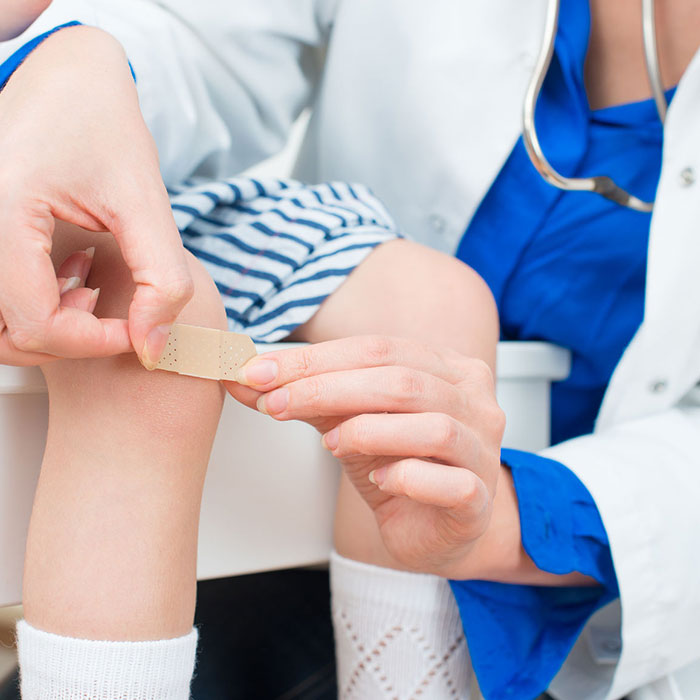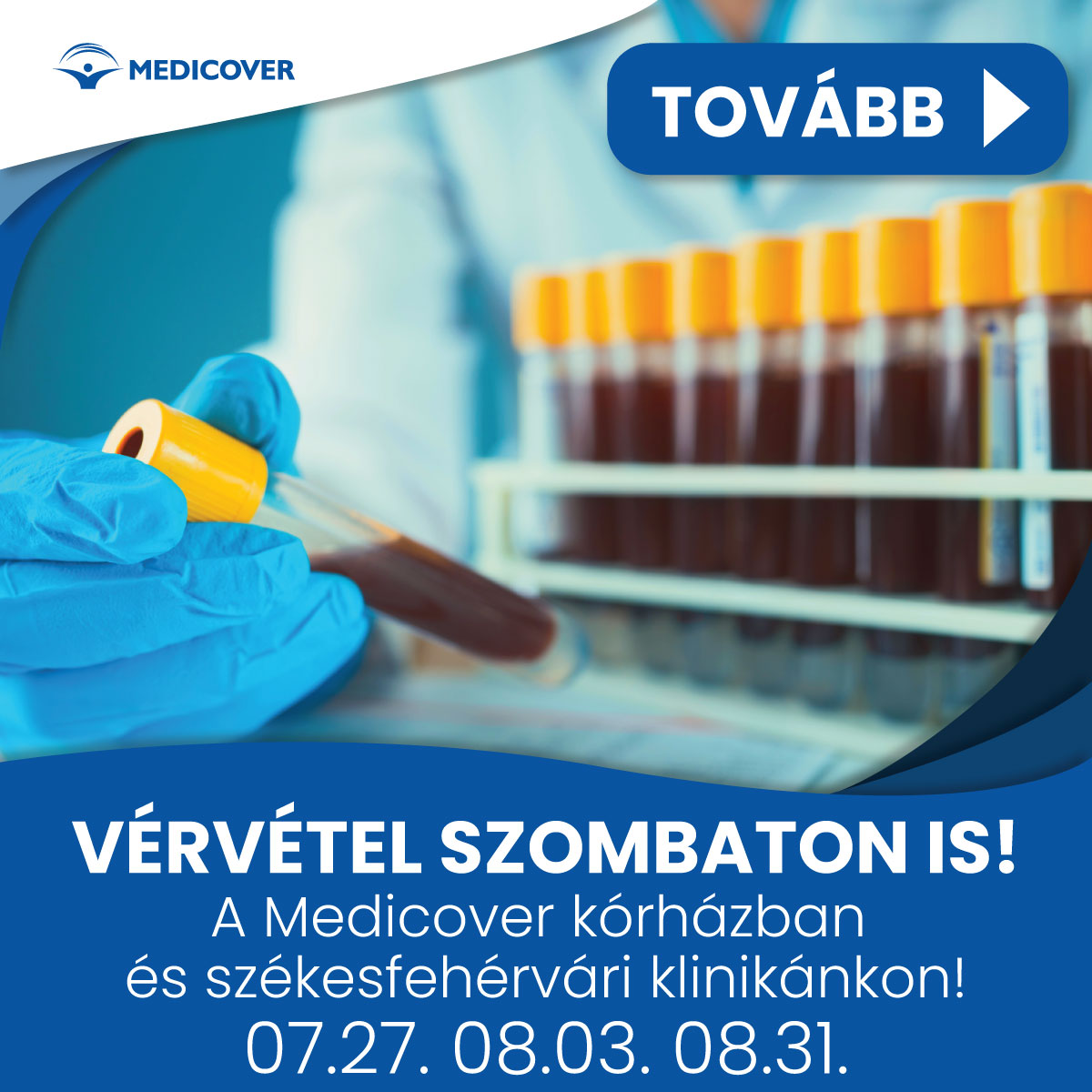Paediatric traumatology
When it comes to children, even the smallest injury, bruise, or fall can cause great fright, making the parent concerned as well. However, it is important for the parent to remain calm even in such a case and to be able to calmly judge the severity of the situation. We know this is especially difficult at times, so our trained telephone customer service staff will ask you in detail about the child’s injury and its circumstances, and direct the little patient to the right place.
At our paediatric traumatology clinic, our specialists treat minor, acquired limb injuries.
Serious injuries requiring immediate care, as well as an ensembles of injuries, are cared for according to the nationally organized on-call system in the specialized emergency units of the central institutions, where complex care is provided at all hours of the day.
We would like to draw your attention to the fact that it is not possible to treat injuries resulting from a traffic accident or violent act at Medicover’s clinics, which require acute, surgical intervention or a complex, multidisciplinary investigation.

In case of which injuries can I visit a Medicover paediatric traumatology clinic?
As part of our paediatric traumatology clinic, it is possible to treat minor lower and upper limb injuries that do not involve arterial bleeding and do not cause sensory deficit.
Greenstick fracture
In childhood, a small fall or slip can also cause a so-called greenstick fracture. This type of fracture only occurs in childhood, in which case a complete fracture does not happen, it occurs only on one side of the bone, and the other side only bends, the whole is still held together by the elastic periosteum. Usually, children do not feel any pain, it may just appear that they do not weigh on the limb in the usual way. The symptoms of greenstick fracture are usually the same as a simple (closed) fracture’s.
Bone crack
It occurs when the muscle is already tired and transmits the shock to the bone, resulting in a crack. The main symptom is pain when moving.
Simple (closed) fracture
It develops as a result of a sudden, short-lived force on the bone. It is associated with severe pain, swelling, limited mobility, deformation, and loss of function.
Joint dislocation
It occurs due to excessive force. In addition to damage to the ligaments of the joints, the joint head (bone end) completely leaves the articular cavity and is permanently fixed in this abnormal position. In addition to the visible, abnormal position of the joint, it is associated with intense pain, bruising (purple spots), and swelling.
Sprain
As a result of a force, the two bone ends move out of place, the articular cavity and ligament stretch, but when the force ends, the joint surfaces remain in place, unlike in case of joint dislocation. It is mostly accompanied by severe pain, swelling and haematoma.
Bruising of knee, ankle, leg, thigh
It is a general injury resulting from impact injuries. As a result of the injury, from the blood leaking into the connective tissue, dark, bluish-purple spots appear on the surface of the skin at the point of impact, which gradually become greenish and then yellowish during healing. The area of the bruising is usually painful and sensitive to pressure.
Strained muscle
It usually occurs in the muscles of the legs and thighs. As a result of the wrong movement, the muscle suddenly hardens, and the injured area becomes sensitive to pressure.
Partial muscle rupture
It is triggered by a bad movement under significant pressure, as a result of which the continuity of the muscle fibre is interrupted. There is a sharp, sudden pain, which may be accompanied by swelling and bruising.


Surface injuries, abrasions
In this case, the upper layers of the skin are damaged, but it is important to treat them as well, thus protecting them from infection.
Injuries caused by foreign bodies
This includes injuries caused by splinters. These should be professionally removed from the skin as soon as possible to avoid infection.
Bite wounds
The most common injuries caused by animals should be treated as soon as possible due to the risk of infection.
Small surface burns resulting from a household accident
Within the framework of paediatric traumatology, we can provide care for first-degree burns with redness, and small areal, second-degree burns with blisters. Third-degree, deep, tissue-damaged burn injuries can be treated in the specialized emergency units of the central institutions.
To treat head injuries, please contact your local traumatology as soon as possible.
What happens during a paediatric traumatology examination?
Care is provided in the framework of the private paediatric traumatology practice after making an appointment. In most cases, we can provide an appointment on the day of calling, thanks to which, besides the minimal waiting time, the little injured can be cared for quickly. The examination and care are performed in a calm environment by a trained paediatrician.
It is the responsibility of the paediatric traumatologist to treat the lesions following the injury, while alleviating the pain and at the same time, restoring the anatomical condition prior to the accident.
The examination begins with the medical history: the traumatologist first asks the parent about the circumstances of the accident and the complaints, and then about any previous illnesses (fractures, surgery, sprains, etc.). This is followed by an examination of the body part in question. The paediatric traumatologist first examines the affected area and then performs a functional examination: the range of motion and deformation of the small and large joints, and the axial deviation. They then check the sensory, motor function and circulation of the limbs. Physical examination can sometimes be painful, but the specialist will always prepare the small patient for this.
To make a diagnosis, imaging procedures (digital X-ray, MRI or CT) may also be required, which can be performed in our advanced diagnostic centre.

What treatment options are available?
Based on the diagnosis, the paediatric traumatologist can decide on wound care, conservative treatment of fractures and strains, e.g. in the form of brace or plaster fixings. If the injury requires additional surgical care or monitoring, we will refer the small patients who have come to us to emergency units after the primary care. At our clinics, it is also possible to have traumatic aftercare in the form of physiotherapy and electrotherapy. They help heal, strengthen the muscles of the injured body part, thus reducing the chances of subsequent similar injuries.

